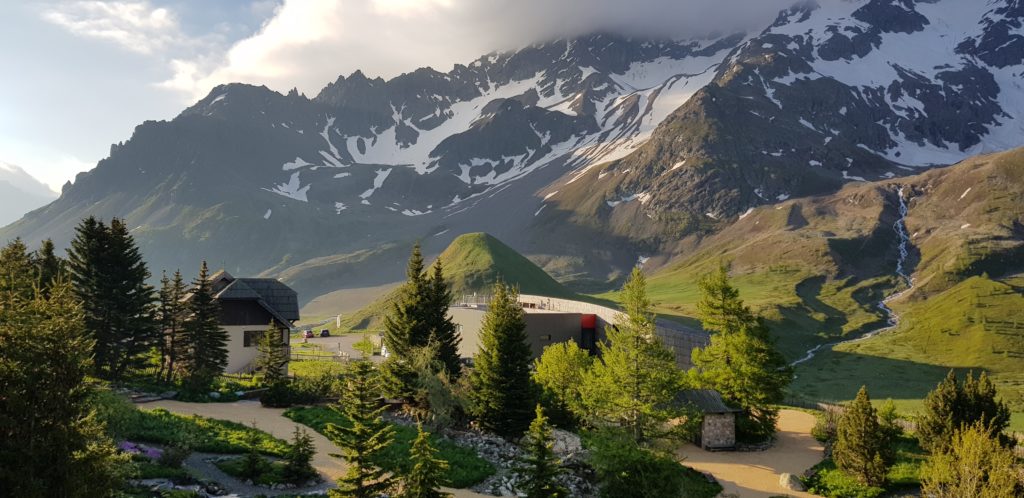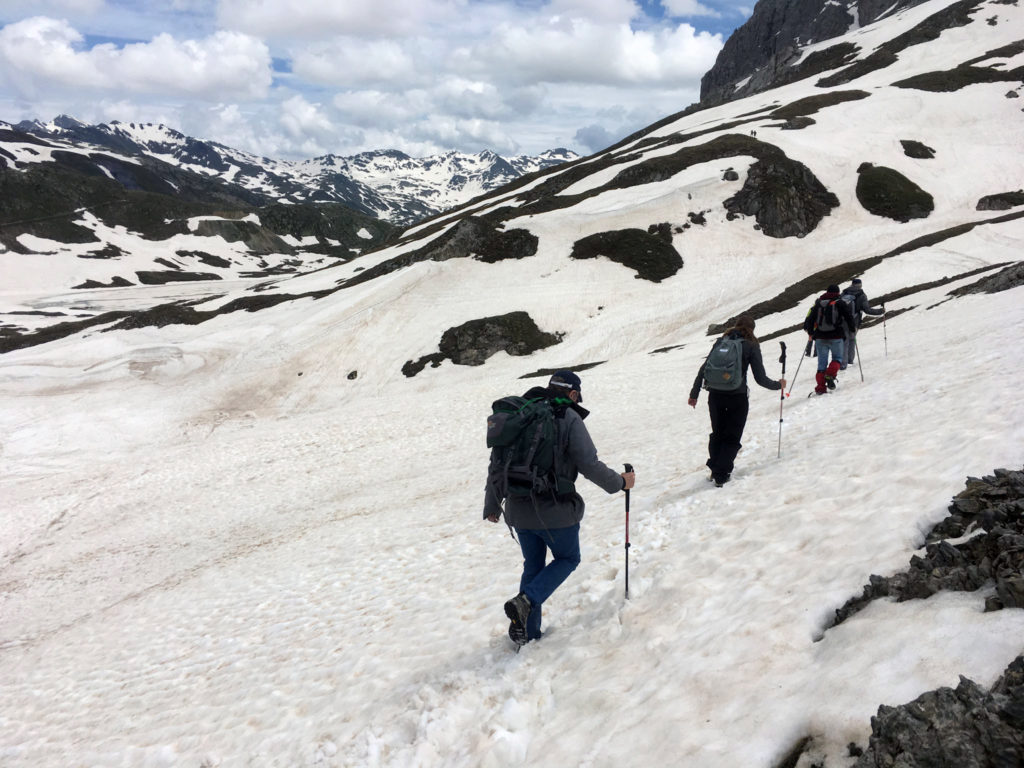GOALS
To assess the biodiversity of green algae in representative mountain environments in the Alps, including pioneer areas opened by glaciers’ retreat and snow cover, using environmental DNA.
To isolate and purify living strains of green algae for genomic, taxonomic, biological and ecophysiological characterization, in relation to high altitude environmental parameters.
To characterize the acclimation and adaptation strategies of green algae to high altitude environments.
To characterize the dynamics of green algae in snow and identify the parameters to take into account in climate models.
FIELD CAMPAIGNS
Field campaigns are carried out with the logistical support of the Lautaret Garden (Jardin du Lautaret). They have been initiated in May-June 2017, on several selected sites including Vallon Roches Noires (from 1,900 to 2,800 meters above sea level), the Cerces-La Bruyère sector and the Ecrins National Park (from 2,200 to 3,200 meters above sea level). In addition, the studies carried out within the framework of the ALPALGA project can benefit from sampling performed in other contexts, including the ORCHAMP project, on the sites of Chamrousse, Anterne, Loriaz, Vieux-Chaillol and Ristolas (from 1,200 to 3,000 meters above sea level).


EXPLORING BIODIVERSITY
The exploration of biodiversity is achieved through the study of environmental DNA, carried out by the Laboratory of Alpine Ecology, using the metabarcoding method.
LABORATORY EXPERIMENTS
The culture of algal samples collected in the field is carried out at the Laboratory of Cell and Plant Physiology.


PARTICIPATORY SCIENCE
A collection kit and instructions allowing hikers to contribute to the exploration of the biodiversity of microalgae are under development. More information in 2022.


